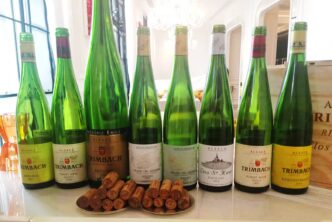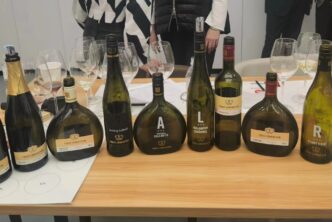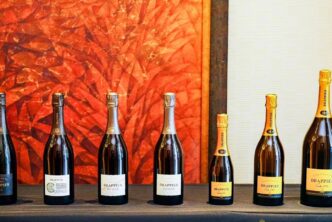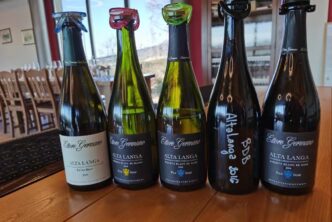The following is new column here at TerroirSense Wine Review. “Focus dossier” will be an ongoing, regular feature of the magazine in which one of the world’s great wine estates will be featured each time and a number of its wines described (mostly the recent releases hitting store shelves then and there, but also a smattering of older vintages for context). Wineries from all over the world will be featured….France, Italy, New Zeland, Chile, USA, Canada, Germany, Hungary, Australia, South Africa, Argentina, Spain, Portugal…you name it, we’ll get there. I, and everyone here at TerroirSense Wine Review as well, sincerely hope you enjoy this new column!
— Ian
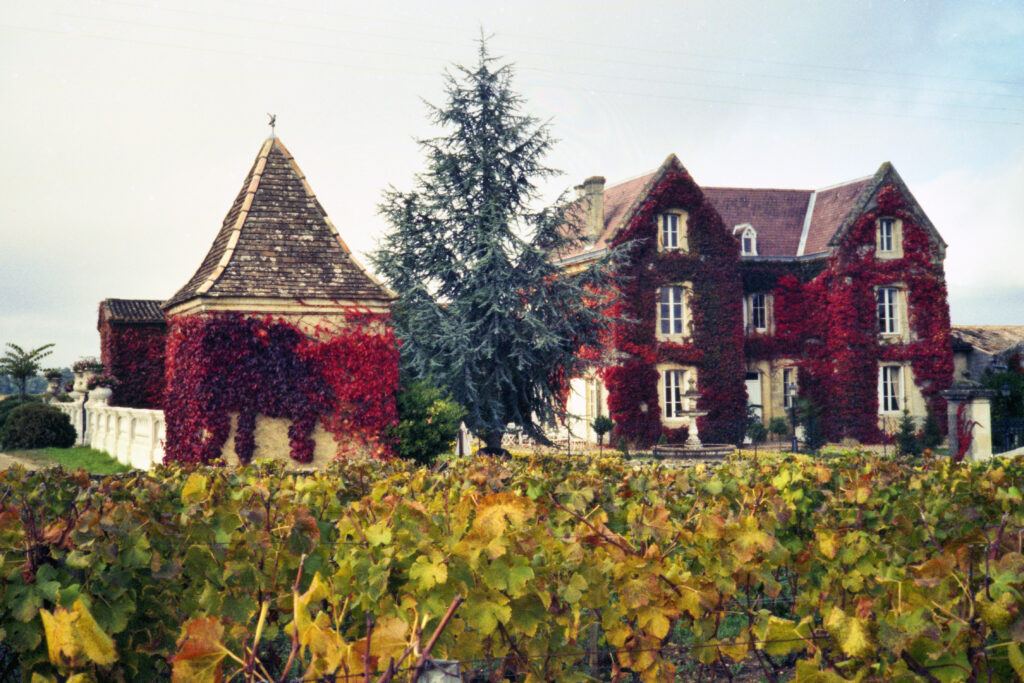
One of Sauterne’s best-known estates was founded in 1850 appropriately enough by Raymond Lafon (at one time Mayor of Sauternes), who thought well of naming the estate after himself (so yes, it would have been strange if the winery had been called Ch. Bobby Green or Ch. Mario Neri). Because of its relative recent date of birth, the Château went unclassified in the famous Bordeaux classification of 1855, generating the somewhat curious modern-day anomaly of one of Bordeaux’s very best estates being unranked officially (and is therefore, rather unfortunately, never included in the Primeurs UGCB tastings). Interestingly, over the years, Château Raymond Lafon not had that many owners, but the list of individuals of note associated with it is not short. For example, Lafon gave way to his nephew, Louis Pontallier, who was the grandfather of Paul Pontallier, the world-renowned general director of Château Margaux, who in the 1980s, along with owner Corinne Mentzelopoulos, essentially turned that prestigious property’s fortunes around. Louis Pontallier sold the winery and vineyards in 1952 to the Bourdier family, and twenty years later it was bought (in 1972) by Pierre Meslier and his wife Francine. Pierre Meslier is an extremely famous name in Bordeaux circles, given that he was the managing director of Château d’Yquem for close to thirty years (from 1963 to 1990), and responsible for some of that storied Château’s most famous wines (in fact, it was Francine who ran Raymond Lafon while Pierre was in charge at Yquem). This fact alone should tell you a little something about just how good the wines of Raymond Lafon are, an estate that couldn’t be any closer to Château d’Yquem (which is essentially Raymond Lafon’s neighbour on the other side of the road; in fact, Raymond Lafon is located on the Bond Street or Fifth Avenue of Sauternes production, given that famed Château Lafaurie-Peyraguey and Château Suduiraut are located close by too). Today, the estate is managed by the three children of Meslier: Charles-Henri (who follows the vines and the work in the cellar), Marie-Françoise (who officially runs the estate since 1990), and Jean-Pierre Meslier (who lived fifteen years in the USA, and is therefore, logically enough, in charge of public relations and contacts with the English-speaking visitors/professionals/clients).
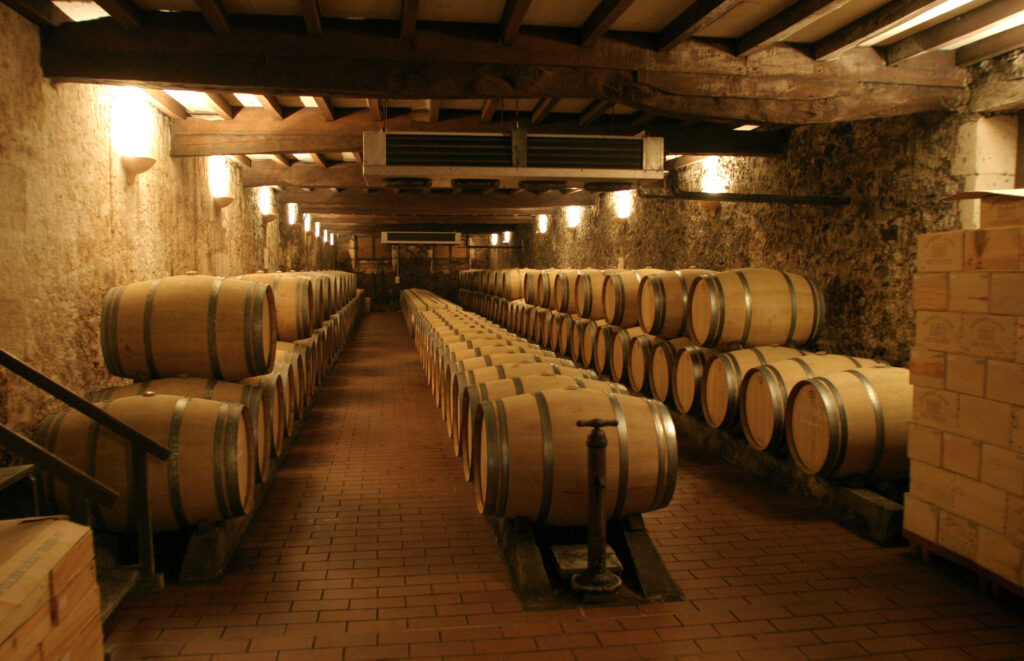
The estate and its wines
Always a very traditionally run property, the wines of Château Raymond Lafon are luscious and thick, rich and opulent, but always characterized by a lively core of acidity that makes them taste anything but heavy. That said, many tasters are routinely fooled by the wines that in their youth seem to be teetering on the edge of not enough acidity, but in my experience they do, and age quite well. The estate’s vineyards cover twenty hectares (of which eighteen are actually planted to vines) on soils that are a mix of gravel, sand and clay (the estate’s vineyards are situated in the communes of Bommes, Preignac and Sauternes). The vines are roughly forty years old, planted in a typical enough 80% Semillon and 20% Sauvignon Blanc mix (typical in the sense that the majority of quality Sauternes estates have always favoured Semillon in their vineyards and wines, at least until recently, when the worldwide craze for pungent, crisp white wines has pushed many Sauternes estates in the misguided quest for increased freshness and lightness in their wines, and to therefore increase the presence of Sauvignon Blanc, a big mistake). Importantly, the wine blend reflects the plantings, so every vintage of Château Raymond Lafon are more or less an 80-20 Semillon/Sauvignon Blanc blend, with very little variation from year to year. Depending on the vintage, this can take anywhere from three to ten different passages (usually taking place over a three to six week time period), though in most vintages it is four to five. No matter: four, five or ten, all of this makes you aware of why making Sauternes is an expensive proposition and the wines cannot really be inexpensive (in that light, also keep in mind that while the wine is fermented in stainless steel, it is aged in 100% new French oak barriques, in and of itself not exactly a manner by which to cut costs). Usually, the many different passages in Sauternes vineyards are conducted with the goal of culling a selection of grapes at different stages of ripeness (so as to be able to count on at least some grapes with higher acid concentrations) as well as different degrees of air-drying and of noble rot involvement (doré, pourri plein, rôti). And while at Raymond Lafon they do include some grapes that are only at the (relatively early) stage of doré, so as to not pack in too much potential sugar in the final wine, keep in mind that for the most part at Raymond Lafon the grapes are almost always 100% hit by noble rot to the fullest degree, which tells you a lot about the style of wine made at the property (for example, Jean-Pierre Meslier told me that both of the most recent vintages, 2019 and 2020, were made with grapes that were 100% noble rot-affected). In fact, even in the hottest vintages such as 2003, Raymond Lafon made a grand vin that was mostly marked by noble rot (though clearly some element of passerillage, or air-drying, was inevitable in such a canicular year); then again, in some less obviously less hot vintages, such as 1985, the presence of passerillage was surprisingly noticeable (botrytis cinerea, or noble rot, appearing very late in the season that year). But again, the hallmark of Château Raymond Lafon’s grand vin is the presence of noble rot when the noble fungus isn’t around, the estate prefers not to make its wine, such as was the case in 1974 and 2012 (and for that matter, very little wine was made in the hot and dry 2000 vintage). By the same token, this estate has made numerous truly unforgettable wines, and I urge any Sauternes lover, heck, any wine lover, to do his or her best to get hold of bottles of the 1975, 1983, 1988, 1990, 2001 and 2009 that I do not describe in this article but are absolutely unforgettable. The estate also makes a second wine, called Jeunes Pousses de Raymond Lafon (recently renamed, from the previous Le Cadet de Raymond-Lafon), which is more accurately described as “another” wine, made in a more graceful, less rich style, than a true second wine; depending on the vintage, and how much of the grand vin is made, it can represent anywhere from 20 to 80% of the total volume of wine bottled in any year.
The wines
2020 Château Raymond Lafon Sauternes 92+
Bright pale golden yellow. Delicate scents of fresh apricots with nuances of acacia honey, lemon peel, orange flowers and almond paste on the pretty if not especially powerful nose, hinting at a touch of floral botrytis too. Then fresh and juicy, with very light on their feet flavours of ripe yellow peach, fresh ginger, tangerine, sweet spices and minerals on the long, lifted finish. A slightly less exuberant, rich version of Raymond Lafon, one where less is more, offering a sweet but light mouthfeel (137 g/L r.s. and 3.78 pH) and greater flexibility at the dinner table. I do not believe, unlike others have written, that this wine is loaded with “candied this and that”, but rather embodies a very refined, less luscious than usual version of Sauternes that is very much the product of its year (rainy in the first part of the season, then dry, then rainy again towards the end of it), as it should be. That said, the wine will undoubtedly put on some weight with proper aging in the cellar. About one third of the total harvest went into the 2020 Raymond Lafon (and another 40% into the second wine), the result of grapes picked between September 10-17, 23-30 and October 19-23. Drinking window: 2025-2040
2019 Château Raymond Lafon Sauternes 97
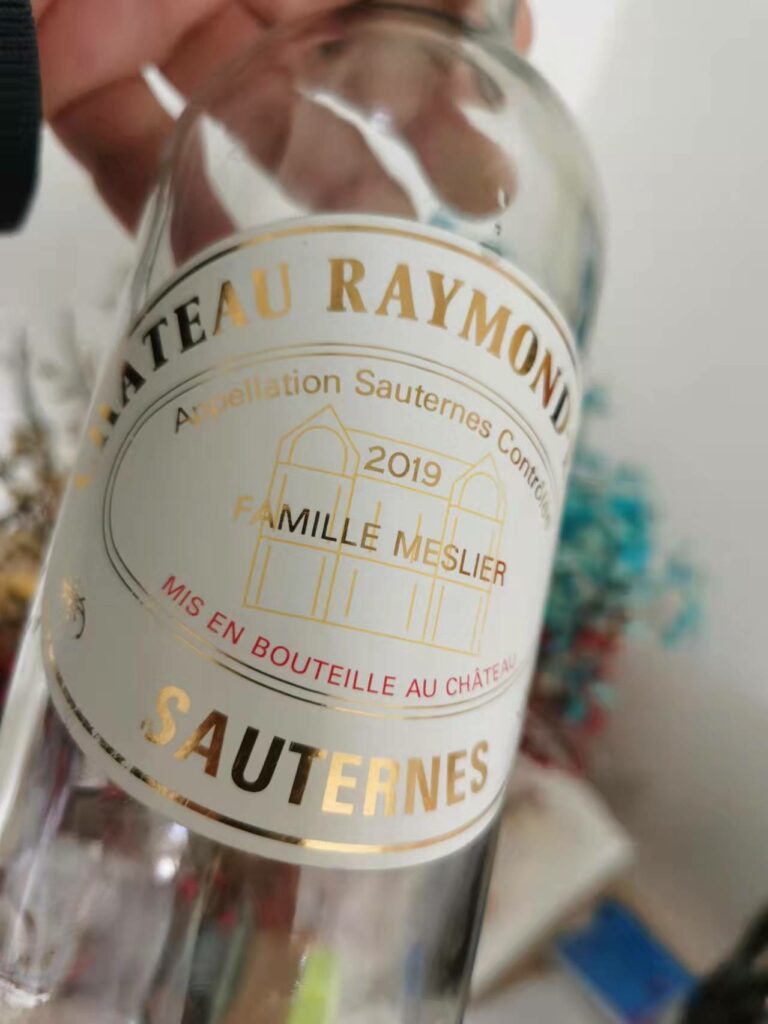
Made from yields of only 8.5 hL/ha, or about one glass of wine per vine, the 2019 Château Raymond Lafon Sauternes is exceptional. Bright medium yellow with golden highlights. Classic, rich nose of clover honey, lemon zest, winter melon, candied apricot, pear nectar, marzipan, caramel and a little hint of saffron as well as of vanilla and a real sense of marmelady botrytis. Then dense, rich and elegant in the mouth, with ripely fruity and sweetly spicy flavours showcasing wonderful balance despite the richness (133 g/L r.s. and 3.79 pH) that linger impressively on the lusciously textured, long close. Really gorgeous mouthfeel here, with hints of crystalized Mirabelle and repeating nuances of honey and candied orange peel on the long, multifaceted back end. The 2019 growing season was characterized by a long, hot summer and noble rot arrived late (in early October after many estates had picked most of their grapes) but the fact it attacked very ripe fruit made fror some fantastic, slightly atypical but extremely layered, rich, dense wines. And so it is that the 2019 vintage was an unabashedly excellent one for the wines of Sauternes and Barsac with many memorable wines made, and make no mistake about it, the 2019 Château Raymond Lafon Sauternes is one of them (it is also a wine that despite what you’ll read elsewhere, is clearly and heavily marked by the presence of noble rot). The result of six different passages in the vineyards between September 23 and October 29, most of the grapes were harvested before October 20 as the late October weather the weather was not ideal to elave grapes hanging on the vines. Drinking window: 2024-2045.
2010 Château Raymond Lafon Sauternes 95
From a memorable year especially for Bordeaux’s red wines, an excellent Sauternes as well. Focused and energetic on both the nose and the palate, the 2010 Château Raymond Lafon Sauternes offers aromas and flavours of canned pineapple, guava nectar, caramel, tangerine nectar, and orange marmalade, plus lashings of vanilla, ginger and cloves. The aftertaste is long and viscous, with hints of peppery botrytis becoming clearer with aeration and a very strog sense of minerality that is often a hallmark of this specific Sauternes. Boasts lovely balance and similar numbers to those sported by most Raymond Lafons (139 g/L r.s.) and with very good acid lift to keep everything in balance. This is aging very nicely. Drinking window: now-2040.
1997 Château Raymond Lafon Sauternes 95
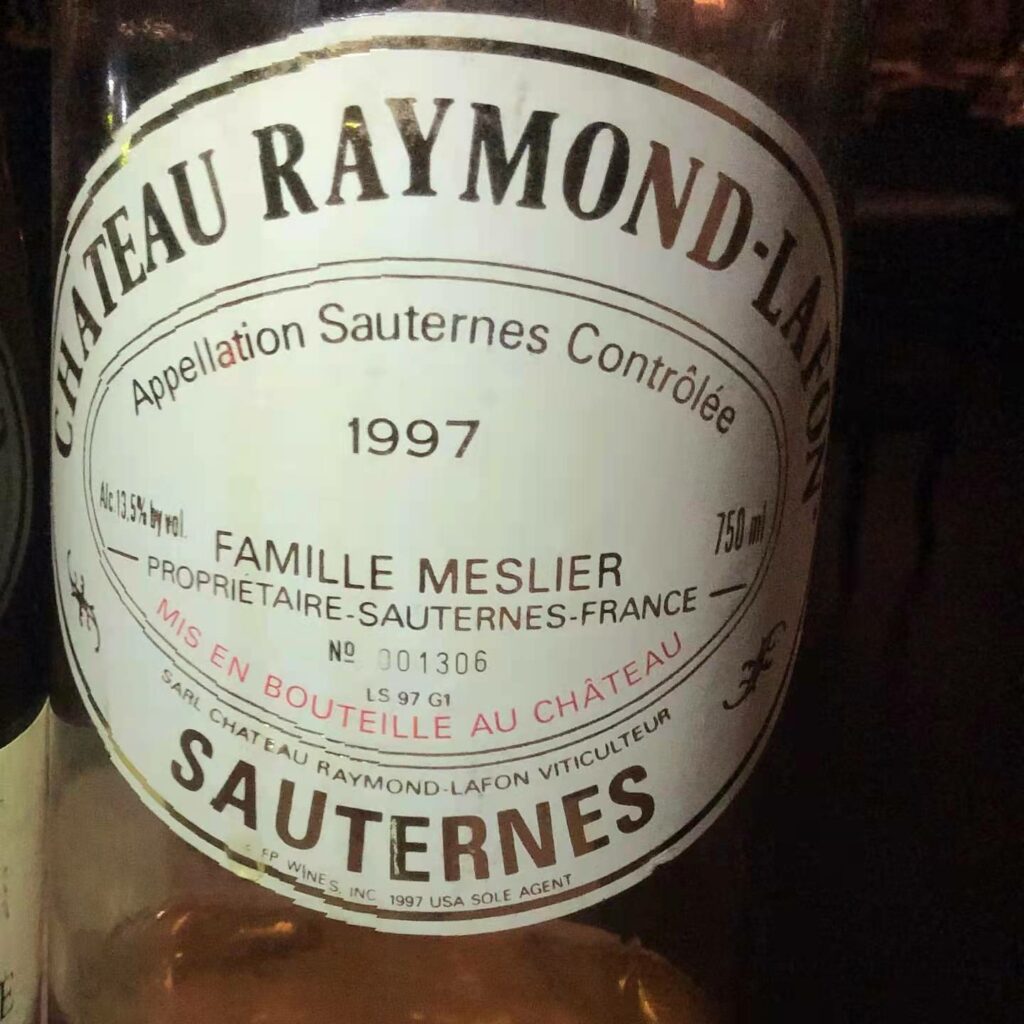
Deep, very lively luminous yellow-gold. Explosive aromas of mirabelle, apricot jam, bananas flambés, minerals and brown spices, with a hint of coffee and a marmelady botrytis presence that builds with aeration. Lush, layered and quite suave, but at the same time large-scaled and superripe thatb remains precise and focused thanks to laser-like acidity. Finishes with excellent, sweetly spicy and tropical fruit persistence. Smells and tastes very young, there’s little to suggest that this is now a twenty-five year old wine. This is a marvelous example of how Sauternes can pair well with foods other than cheese and desserts, such as for example roast poultry and mushrooms dishes. Very well done here. Drinking window: now-2032.
1989 Château Raymond Lafon Sauternes 93
Bright deep golden yellow. Crystallized gooseberries, caramelized banana, coconut, caraway seeds, marzipan, papaya nectar and menthol on the nose. Round and ripe but not thick or heavy, this offers supple but tangy flavors of bittersweet peach kernel, tropical fruit, clover honey, maple syrup, and sweet spices. Expands nicely on the back half where it is at once creamy and juicy, boasting excellent breadth and fine tannins. Less marked by noble rot and richer than some other wines from this property, it doesn’t have quite the verve or length of the 1988, or the sheer magical balance of the marvelously opulent 1983, but I find this graceful and fresh, while boasting real concentration. Try it with something a bit exotic such as Thai curries, samosas and sweet and sour pork. All in all, a beautiful wine that is worthy of real applause and one that famously enough was released at a price lower than that of the estate’s 1988 and 1985, something that is basically unheard of in Bordeaux circles. Drinking window: now-2030.

 中文
中文
